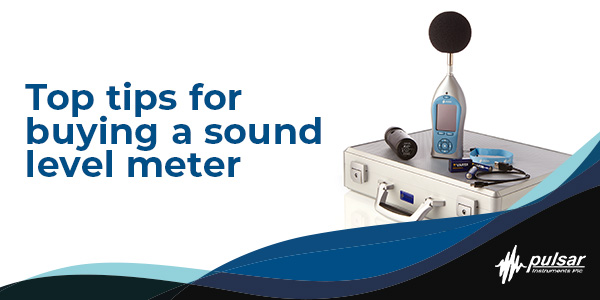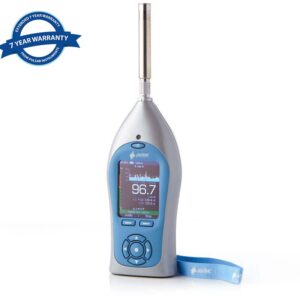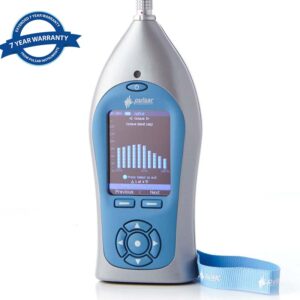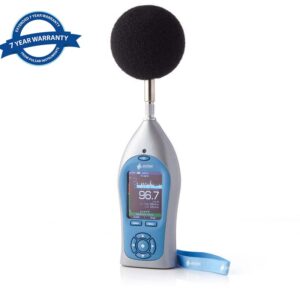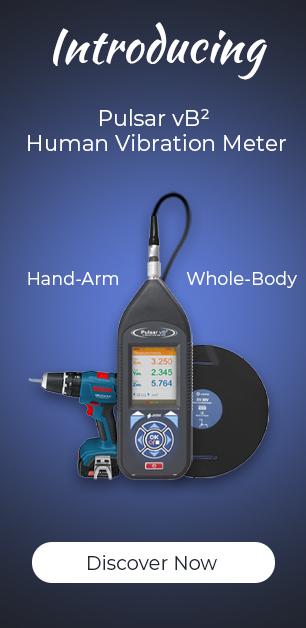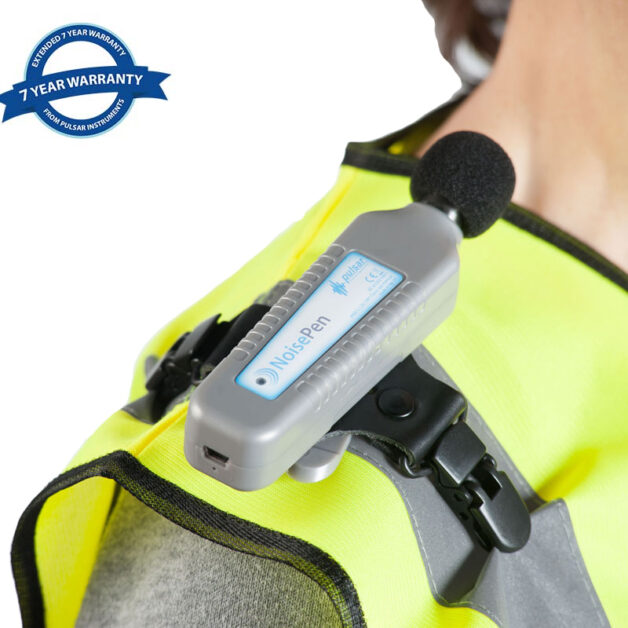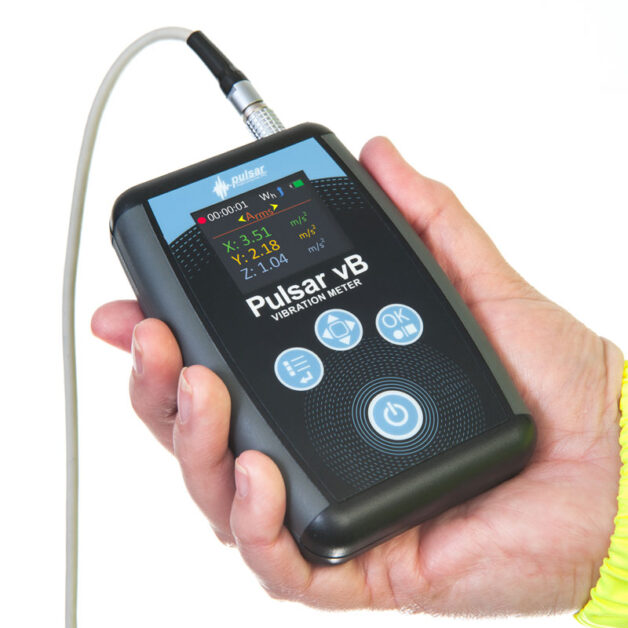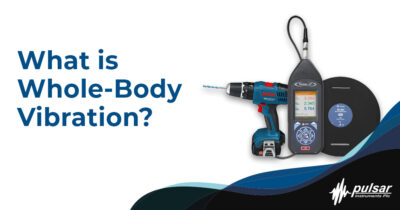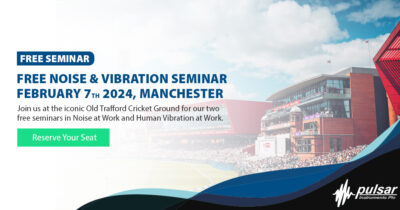This article covers what to look for when buying a sound level meter for the job.
So, you’ve decided to carry out a Noise at Work assessment? Fantastic! You’ve taken the first step to eradicating Noise Induced Hearing Loss from your workplace. Noise at Work assessments are essential when trying to protect your employees from the dangers of noise in the workplace, as well as, defending yourself against future claims for hearing loss.
One of the most daunting parts of the process can be buying a sound level meter. But don’t worry, by the time you are finished with this article, you should know exactly what you are looking for.
The minimum requirements for a Noise at Work sound level meter
When performing your assessment, it is essential that your sound level meter meets the minimum requirements set out by the HSE. The key things for you to look out for are:
- The microphone needs to be a Class 2 (Type 2) or above. Anything lower than this will not be compliant with the Noise at Work Regulations 2005.
- Ensure that your instrument meets IEC 61672-1:2013 – this is the international standard for a sound level meter.
- Ideally the meter needs to be an integrating averaging meter that can measure LAeq – representative ‘A’ weighted average noise level readings, and LCPeak values.
Do I need a Class 1 or Class 2 meter?
A lot of people get confused about whether they need a Class 1 or a Class 2 meter. The major difference between them is that a Class 1 microphone has a tighter tolerance across the whole range of frequencies.
Class 2 meters are substantially cheaper than Class 1. For Noise at Work assessments, the great news is that a Class 2 (Type 2) microphone, is more than enough to meet the Regulations.

What are you trying to measure?
The first thing to consider should always be, what are you trying to measure? Are you trying to measure noise levels in specific areas of your workplace? Or, are you trying to calculate how much noise a certain employee or job role is exposed to?
Measuring noise in specific areas or of a piece of machinery
You may be wanting to create a sound map to find areas where your employees need to wear hearing protection. To achieve this, the most important features you need to look out for on a meter are:
- LAeq – essentially, this is the A-weighted average sound level. If you are unsure what A-weighted means, this means that the sound level has been adjusted to account for the human ear. A lot of the lower frequencies get removed in this process.
- Integrating – you may see this word used a lot when looking for a sound level meter. This just means that it calculates averages, which is important for Noise at Work assessments. A lot of low-end sound meters will just show you snapshots of the noise without levelling it out over time.
- LCPeak – this is the C-weighted Peak. If you are looking to measure loud bangs, impact noise or noisy industrial processes, then you will be wanting to measure the highest levels for your assessment.
- Data logging – a meter that is data logging stores your measurements for you so you can download your measurements and use them in your noise at work assessments. Good data logging instruments also include license-free software as part of the package to help you analyse and report on the data you collect.
The Pulsar Nova range of sound level meters are ideal for the job. We recommend Noise at Work Sound Level Meter – Nova Class 2
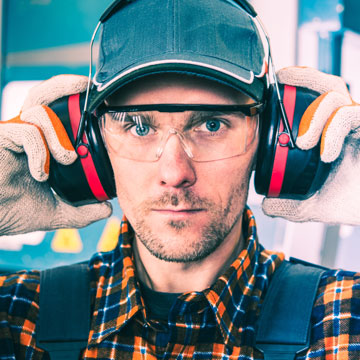
Calculating personal noise exposure & finding the right hearing protection
To calculate personal noise exposure, you have two main options. You can either use a sound level meter or, a noise dosemeter. If you’ve only got the budget for one, then you can find a sound level meter that’s suitable for both area, machinery and personal sound exposure purposes.
The key features of the sound level meter you need for this are the same as for the area assessments described above. In addition, you should also seek a meter that includes:
- TWA/dose – meters that measure the Time-Weighted Average and percentage dose will be able to translate the LAeq into the LEP,d – this is the daily personal noise exposure averaged for an 8-hour working day.
- LCeq – incorporates more of the higher and lower end of the frequency range. It is needed for calculating the level of hearing protection required using the HSE’s calculator for the HML and SNR calculation methods.
- Octave bands 1:1 – Octave Band filters analyse the specific frequencies of the noise. This offers the most accurate way to prescribe hearing protection as it allows you to identify what noise level and frequency of noise you need to protect your employees from.
We recommend the Pulsar Nova meter with Octave Bands (Class 2) for this job.
Bonus tips
Tip 1: Pulsar Instruments’ Octave Band Sound Level Meter comes with our Hearing Protection database, completely free of charge. Simply take your readings, input them into our license-free software, Analyzer Plus, and let it do all the work for you. You will then have a list of hearing defenders that will perfectly protect your employees.
Tip 2: If you think you might need to measure noise outside your factory or premises for environmental purposes then Pulsar’s Class 1 Octave Band meter would be a great solution.
Don’t forget your Calibrator!
Before and after you take any readings for your assessment, you must ensure that your meter has been field calibrated. For this, you will need an Acoustic Calibrator that matches or exceeds the class of your sound level meter.
Pulsar Instruments – Help to choose and help to use
If you’re still not sure, our expert staff are always on hand to help you choose the right sound level meter for the job. Just drop us a message on the live chat below, email us at [email protected] or call us on +44(0) 1723 339 715.
-
 Noise at Work Sound Level Meter – Nova Class 2From £1,898.00 (Ex. VAT/GST)
Noise at Work Sound Level Meter – Nova Class 2From £1,898.00 (Ex. VAT/GST) -
 Octave Band Sound Level Meter – Pulsar Nova 46 (Class 2)From £2,348.00 (Ex. VAT/GST)
Octave Band Sound Level Meter – Pulsar Nova 46 (Class 2)From £2,348.00 (Ex. VAT/GST) -
 Low-Cost Decibel Meter – Pulsar Nova Class 2From £970.00 (Ex. VAT/GST)
Low-Cost Decibel Meter – Pulsar Nova Class 2From £970.00 (Ex. VAT/GST)
